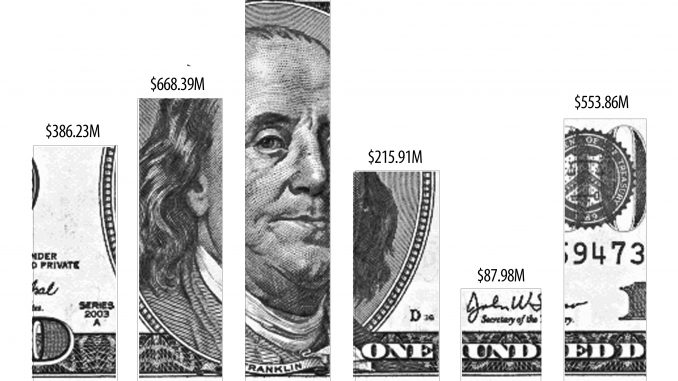
Temple’s endowment fund has historically been much lower than other comparable schools. University officials, however, said they are trying to combat that trend.
The university’s approach to its budget has changed and has now been focusing on fundraising instead of relying on state appropriations and tuition.
University CFO and Treasurer Ken Kaiser said endowments are a gift from a benefactor to be used for a specific purpose. The endowment is permanent and the money given cannot be spent by the university, but the interest made off of it can be. Interest is made by investing the current endowment fund in various ways, Kaiser said.
He added there are several restrictions on how the fund can be invested.
Temple’s 2015 endowment fund was $386.2 million, which is ranked 209th in the U.S. and Canada, according to the National Association of College and University Business Officers’ latest report.
The University of Pennsylvania, Penn State and the University of Pittsburgh all rank in the top 30 in endowment funds among all American and Canadian institutions in the report.
Smaller schools in Pennsylvania like Drexel University, Dickinson College, Lafayette College, Haverford College and Bryn Mawr College all have larger endowments than Temple.
The University of Pennsylvania leads schools in the state, ranked ninth in the country with a $10.1 billion endowment. It relies, however, on larger endowments because it is a private institution with no state funding.
The average endowment fund is $648.1 million, but the median is $115.8 million.
Kaiser said Temple’s endowment fund is low because the university is late to the idea of fundraising.
“I think some of the other schools realized how valuable fundraising can be before Temple did,” he said. “Maybe 30 [or] 40 years ago Temple looked at the commonwealth appropriation and thought, ‘Well that’s like 60 percent of our budget. What do we really need to fundraise for?’ I think some of the other schools were better at looking into the future.”
Kaiser said another reason is student involvement. He said 10 or 15 years ago Temple was primarily a commuter school and it was hard to engage alumni.
“You commute, you graduate, you don’t hear from Temple for 15 years and you kind of lose touch,” he said. “It’s almost like a lost generation. And there’s people that have graduated that are billionaires that we probably haven’t been able to connect back with.”
In order to increase student involvement, Julie Wilkins, the coordinator of student relations, helps organize and collect the senior class gift.
Wilkins added the idea came from the Office of the Provost, which encourages students to donate either time or money to the schools that impacted them the most.
“They want to bring faculty and students together and they also want to educate current students about the impact of philanthropy,” she said.
Wilkins said if students get involved now before they graduate there’s a better chance they will stay involved after graduation and donate more.
Recently, the School of Media and Communication received the largest one-time gift in the school’s history, when alumnus Steve Charles donated $2 million to create a Chair for Media, Cities and Solutions. It was the first-ever, donor-endowed chair in SMC history.
Kaiser later said in an email Temple has seen many high-level donors respond to Temple’s projects and plans like the proposed football stadium and the future library.
Dominic Barone can be reached at dominic.barone@temple.edu.


Be the first to comment